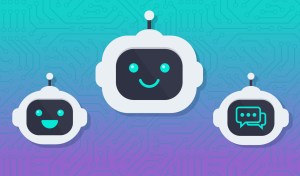Conversational UI
Bridging the communication gap between humans and machines has long been a challenge in the technology industry. While Computers shine at performing difficult logic-based tasks and solving complex computations, they have often fallen behind when it comes to understanding day-to-day human language. However, with the rapid technological advancements in fields such as Artificial Intelligence, Machine Learning, and Data Science, this idea is slowly turning into reality in today’s internet-powered world.
First things first, a definition!
AI, Chatbots, and Voice Assistants are terms that have become popular in recent years. The common ground for these words is CUI (or Conversational User Interface) which simply refers to a digital interface that allows people to interact with a computer by following human-to-human conversation principles with the ultimate goal of creating a seamless user experience.
Evolution of UIs
User interfaces have evolved drastically over the course of five decades from having to input limited commands on a black and white terminal, to being able to navigate a graphical user interface (GUI) using a keyboard, mouse, or touchscreen, and finally being able to write or speak directly to a device in order to get an informative response.
The downside to Graphical User Interfaces has always been the difficulty to push users to adapt to new interfaces and learn new ways to operate them. This becomes apparent when we take a moment to think about the reasons why we use digital products in the first place which all boil down to solving problems. And to do so, the focus needs to be on the problem itself and not the interface we use to interact with it. However, the latter makes it harder as it introduces a layer of complexity for users.
The best interface is no interface.”
– Golden Krishna, Google
The case can certainly be made that the future of UI will be “interfaceless” and that it will provide a far more superior user expertise than what we are currently using. By shifting focus away from physical interfaces, designers and developers can focus on solving problems more effectively. This idea can seem too futuristic but implementations of it have already been around for quite some time.
Type of Conversational UI
Chatbots (text-based assistants)
Chatbots are visual interfaces that are present across desktop and mobile devices that allow for conversations between users and bots in the form of chat bubbles within a messaging app.
AI-driven bots can use NLP (Natural Language Processing) and machine learning to analyze and understand the requests users type into the interface. An ideal AI-powered bot should be able to differentiate the nuances of human language and derive the right meaning from what it’s being asked instead of only understanding specific commands.
Voice Assistants
Voice assistants are another type of bots that allow communication without a graphical user interface merely relying on sound. Tech giants such as Apple (Siri), Google, Microsoft (Cortana), and Amazon (Alexa) are all behind some of the most widely used voice assistants on the market today and are constantly working to improve them.
The technologies behind this type of bots range from artificial intelligence and machine learning to voice recognition and natural language processing. The latter is crucial since voice introduces new challenges including user intent, context, slang, accents, and unique speech patterns.
How Can Conversational UIs Help You?
As opposed to traditional interfaces, bots in all their forms introduce a wide array of benefits that can help businesses and organizations reach their goals faster and more efficiently.
Their applications can be seen in a wide range of business areas including Customer Support, Sales, Lead Generation, Human Resources, or simply behind the scenes as Data Gathering mechanisms.
Available 24/7
No matter the time of day, bots are always available to answer your customers’ questions and help them get instant access to curated information when they need it. This is an incredible advantage since delayed responses decrease your chances of lead acquisition.
Automation
Bots can help your business automate simple tasks that would traditionally take up a signification amount of time such as customer support or lead generation.
For example, simple questions get answered immediately cutting on wait time and leaving room for customers with more complex questions to speak with human representatives.
Similarly, consider implementing a bot that would gather lead qualification data, your sales team would consequently dedicate all their efforts to high-scoring prospects as opposed to leads that will unlikely pan out.
Impact on Brands
Conversational UIs give businesses an opportunity to show their human side since your digital presence will now have a “voice”. In this way, brands can use the chatbot persona to emphasize their values and what they stand for. They can create a personality that will help them engage with their target audience on a more personal level making the bots relatable, believable, and more relevant to users which will ultimately lead to a better user experience.
Conclusion
Conversational UIs are undoubtedly taking the digital world by storm and their usage is becoming more ubiquitous and powerful as the technologies that powers them evolve.
Despite certain shortcomings, there is a lot of potential in making conversational UIs the perfect marketing and sales tool for your business goals.
While cutting-edge AI and Machine Learning powered bots are still hardly accessible to the vast majority of companies, there are ways that allow you to tap into the rising potential of this technology today. Contact us to see how we can help you design a conversational experience that can help your business grow.


